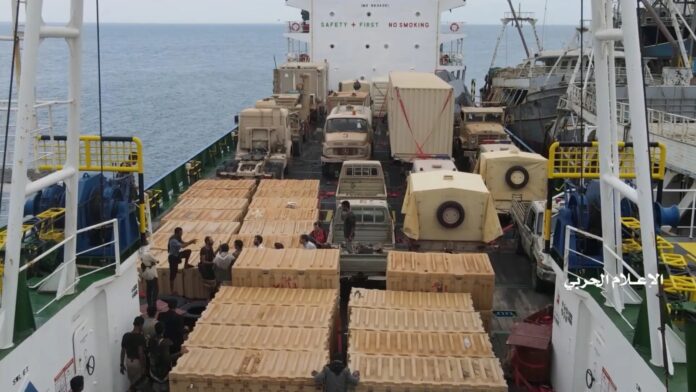The Iran-backed Houthi movement in Yemen targeted vessels linked to Israel, prompting a swift response from a United States warship deployed in one of the world’s busiest maritime routes.
The Houthi forces, in control of the Yemeni capital Sanaa, have asserted that further attacks will follow unless Israel and the US intervene to halt the conflict in Gaza.
The Red Sea, a vital waterway for global trade, witnessed the Houthi movement’s latest offensive against vessels associated with Israel. The attacks have heightened concerns about the security of maritime routes and regional stability.
The Houthi group, known for its control over Sanaa and an expanding military, has openly declared its intent to continue such assaults unless there is intervention to cease the ongoing conflict in Gaza.
The specific details of the attacks on Israel-linked vessels have not been fully disclosed, but the incident prompted a decisive response from a US warship in the region.
The United States, deeply involved in regional affairs, swiftly addressed the situation, underscoring the strategic importance of maintaining stability in critical maritime routes.
The Houthi movement’s alignment with Iran has long been a source of tension in the region, with the group often accused of receiving support from Tehran.
The recent attacks on vessels tied to Israel further underscore the complex dynamics at play, with geopolitical tensions having ripple effects on maritime security.
As the situation unfolds, there are growing concerns about the potential impact on global trade, given the strategic importance of the Red Sea for shipping lanes connecting Europe, Asia, and the Middle East.
The Houthi movement’s willingness to escalate attacks raises questions about the broader regional implications and the effectiveness of diplomatic efforts to quell hostilities.
The United States, through its naval presence, has signified its commitment to safeguarding the security of maritime routes.
However, the overarching challenge remains finding a diplomatic resolution to the conflicts that are contributing to the heightened tensions in the region.
The Houthi movement’s linkage of its attacks to the ongoing conflict in Gaza adds another layer of complexity to an already intricate geopolitical landscape.
It underscores the interconnected nature of regional conflicts and the potential for spillover effects, impacting different theaters of unrest.

